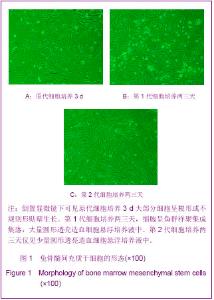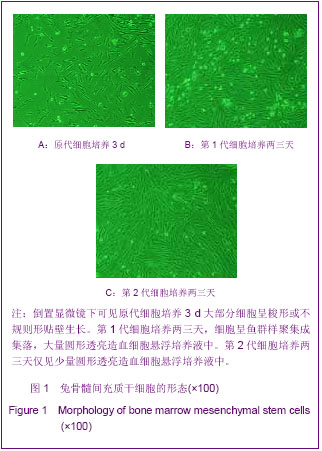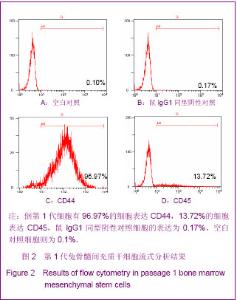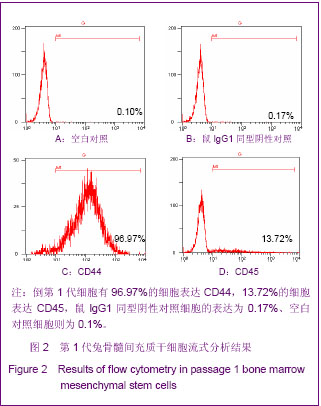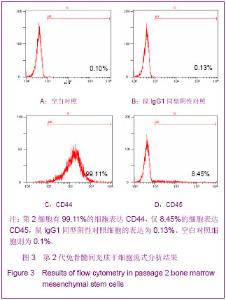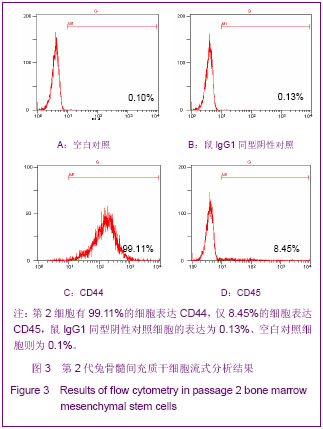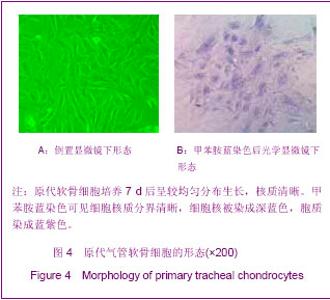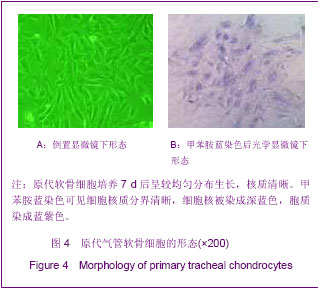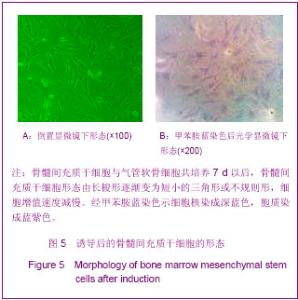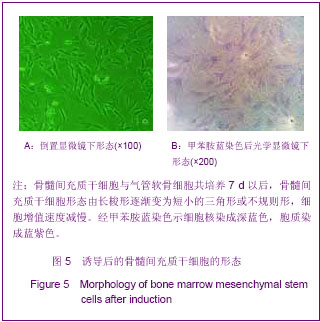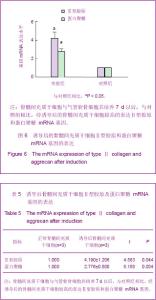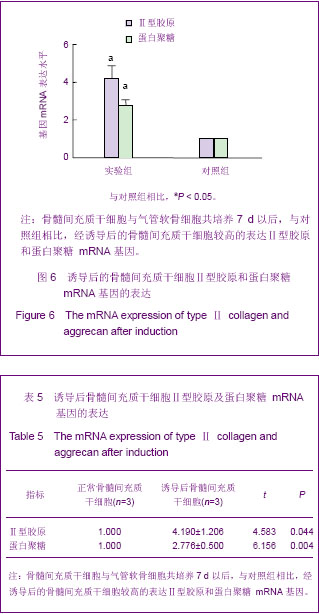| [1] 何少茹,孙云霞,刘玉梅,等.纤维支气管镜在大血管疾病合并气道狭窄中的诊断价值[J].中华儿科杂志,2009,47(10):726-729.[2] Liu KS, Liu YH, Peng YJ, et al. Experimental absorbable stent permits airway remodeling. J Thorac Cardiovasc Surg. 2011; 141(2):463-468.[3] Macchiarini P, Jungebluth P, Go T, et al. Clinical transplantation of a tissue-engineered airway. Lancet. 2008; 372(9655):2023-2030.[4] Beane OS, Darling EM. Isolation, characterization, and differentiation of stem cells for cartilage regeneration. Ann Biomed Eng. 2012;40(10):2079-2097.[5] Charbord P. Bone marrow mesenchymal stem cells:historical overview and concepts. Hum Gene Ther. 2010;21(9): 1045- 1056.[6] Kalathur M, Baiguera S, Macchiarini P. Translating tissue-engineered tracheal replacement from bench to bedside. Cell Mol Life Sci. 2010;67(24):4185-4196.[7] 胡彬,刘晓华,赵林.骨髓间充质干细胞的分离培养与鉴定[J].中国组织工程研究与临床康复,2011,15(27):5108-5111.[8] 李松,郭延伟,房殿吉.兔下颌骨来源骨髓间充质干细胞的体外培养及生物学特性[J].中国组织工程研究,2012,16(14):2477- 2480.[9] Locatelli F, Corti S, Donadoni C, et al. Neuronal differentiation of murine bone marrow Thy-1-and Sca-1-positive cells. J Hematother Stem Cell Res. 2003;12(6):727-734.[10] Phinney DG. Isolation of mesenchymal stem cells from murine bone marrow by immunodepletion. Methods Mol Biol. 2008;449:171-186.[11] Harichandan A, Buhring HJ. Prospective isolation of human MSC. Best Pract Res Clin Haematol. 2011;24(1):25-36.[12] Nery AA, Nascimento IC, Glaser T, et al. Human mesenchymal stem cells:from immunophenotyping by flow cytometry to clinical applications. Cytometry A. 2013;831(1): 48-61.[13] Park JS, Shim MS, Shim SH, et al. Chondrogenic potential of stem cells derived from amniotic fluid,adipose tissue,or bone marrow encapsulated in fibrin gels containing TGF-β3. Biomaterials. 2011;32(32):8139-8149.[14] Perrier E, Ronziere MC, Bareille R, et al. Analysis of collagen expression during chondrogenic induction of human bone marrow mesenchymal stem cells. Biotechnol Lett. 2011; 33(10):2091-2101.[15] Mahnoudifar N, Doran PM. Chondrogenesis and cartilage tissue engineering the longer road to technology development. Trends Biotechnol. 2012;30(3):166-176.[16] 张清林,吕惠成,吴一民.转化生长因子β1联合骨形态发生蛋白2诱导骨髓间充质干细胞体外向软骨细胞的分化[J].中国组织工程研究与临床康复,2010,14(24):4371-4375.[17] Park JS, Yang HN, Woo DG, et al. The promotion of chondrogenesis, osteogenesis, and adipogenesis of human mesenchymal stem cells by multiple growth factors incorporated into nanosphere-coated microspheres. Biomaterials. 2011;32(1):28-38.[18] Bosetti M, Boccafoschi F, Leigheb M, et al. Chondrogenic induction of human mesenchymal stem cells using combined growth factors for cartilage tissue engineering. J Tissue Eng Regen Med. 2012;6(3):205-213.[19] Hildner F, Concaro S, Peterbauer A, et al. Human adipose-derived stem cells contribute to chondrogenesis in coculture with human articular chondrocytes. Tissue Eng Pt A. 2009;15(12):3961-3969.[20] Mo XT, Guo SC, Xie HQ, et al. Variations in the ratios of co-cultured mesenchymal stem cells and chondrocytes regulate the expression of cartilaginous and osseous phenotype in alginate constructs. Bone. 2009;45(1):42-51.[21] Tew SR, Murdoch AD, Rauchenberg RP, et al. Cellular methods in cartilage research:Primary human chondrocytes in culture and chondrogenesis in human bone marrow stem cells. Methods. 2008;45(1):2-9.[22] Fischer J, Dickhut A, Rickert M, et al. Human articul archondrocytes secrete parathyroid hormone- related protein and inhibit hypertrophy of mesenchymal stem cells in coculture during chondro- genesis. Arthritis Rheum. 2010; 62(9):2696-2706.[23] Chen WH, Lai MT, Wu AT, et al. In vitro stage-specific chondrogenesis of mesenchymal stem cells committed to chondrocytes. Arthritis Rheum. 2009;60(2):450-459.[24] Niyibizi C, Wang S, Mi Z, et al. The fate of mesenchymal stem cells transplanted into immunecompetent neonatal mice:implications for skeletal gene therapy via stem cells. Mol Ther. 2004;9(9):955-963.[25] Quintana L, zur Nieden NI, Semino CE. Morphogenetic and regulatory mechanisms during developmental chondrogenesis: new paradigms for cartilage tissue engineering. Tissue Eng Part B Rev. 2009;15(1):29-41.[26] Qing C, Wei-ding C, Wei-min F, et al. Co-culture of chondrocytes and bone marrow mesenchymal stem cells in vitro enhances the expression of cartilaginous extracellular matrix components. Braz J Med Biol Res. 2011;44(4): 303-310. |
